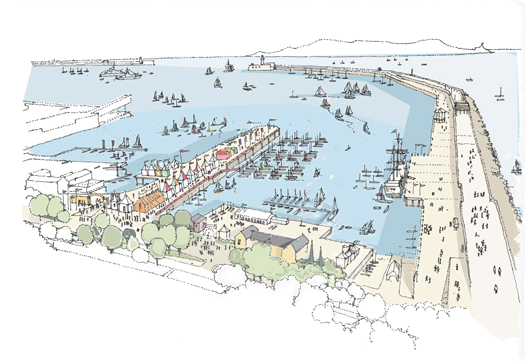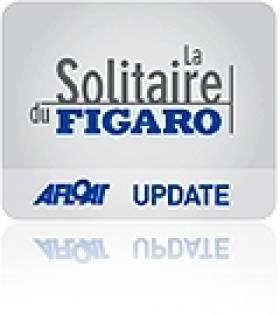Displaying items by tag: yacht race
Galway's Round Rockall Race Winner Applauded
#rockall – Galway city will get its first taste of what a week of seafaring parties and prize-giving ceremonies for intrepid sailors, some of whom have sailed around the world; others who have raced around the remote North Atlantic Island of Rockall, will be like.
The crews of the three boats, which took part in the inaugural Galway/Round Rockall Race, will be feted on the Main Stage in the Race Village complex in Galway Harbour at 7.30pm.
The race organised by Galway Bay Sailing Club, in advance of the Volvo Ocean Race finale, was won by Cork sailor Barry Hurley in his JOD 35 "Dinah". He sailed the 750 mile race single handed beating the German boat "Bank Von Bremen", which has a crew of nine, by two hours on corrected time.
The third boat in the race Jamie Young's "Killary Flyer" got back to Galway at 11.50 on Friday night. He also sailed the race single handed.
All three crews were given rousing receptions when they berthed in Galway Harbour. Tonight they will take centre stage at a ceremony to be attended by Minister of State for Tourism and Sport Michael Ring TD will officiate the prize giving.
Rockall Race Director Aodhán Fitzgerald said they expected the crews of the boats which had taken part in this fascinating race would be given a huge "Galway" welcome home tonight
Huge crowds are expected in Galway for the opening night of the nine festival which has been organised around the finale of the 39,000 mile Volvo Ocean Race. The six boats taking part in the race are expected to arrive in Galway from Lorient late on Monday night or early Tuesday morning.
The race organisers say they issue further updates over the week end on the likely arrival time of the fleet.
Dublin Bay it set to burst alive with 'joie de vivre' during the only foreign stopover in the world-famous Solitaire du Figaro yacht race.
Dun Laoghaire will be the only international stop in the race, considered the unofficial world offshore solo championship, between 11 and 14 August.
To celebrate the visit of the iconic 3,390km race, Dun Laoghaire Rathdown County Council (dlrcoco), the Dun Laoghaire Harbour Company and the National Yacht Club have joined forces to create the Festival des Bateaux.
The harbour will be a magnificent tapestry of colour as the boats arrive for this international event. Dun Laoghaire will be resplendent with fireworks, music and the sights, sounds, foods and ‘joie de vivre’ of France.

How Dun Laoghaire will look in August
Fireworks will light up the sky at 10pm on Friday 12 August. There will also be a festival village with public access to visiting boats, a colourful and authentic French market and exhibition, a festival stage at Harbour Plaza and activities throughout Dun Laoghaire, not to mention a spectacular farewell as the boats depart early on Sunday 14 August.
Meanwhile, plans to berth the 45 or so competitors expected are well underway, according to the National Yacht Club.
Funding was secured between dlrcoco and Fáilte Ireland, and the tender for the supply and delivery of 18x11.5m pontoons and associated service bollards was won by McNiven Marine, Irish agents for Ronautica Marine.
The gangway contract was secured by Tynes Gangway, and the last contract for the installation and de-commissioning of the infrastructure is currently underway.






























































